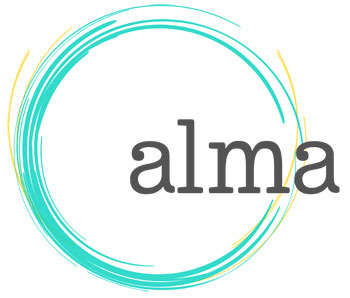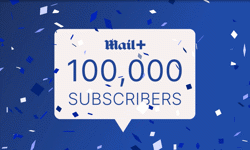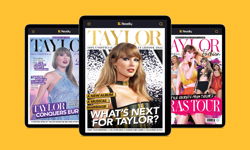
Q: For UK publishers, where will audience growth come from?
A:
Audience has always come from many places, although Google and Facebook have been the largest in terms of significant volume. Google’s fragmentation in terms of products has been increasing – as Discover gains more and more traction and is worked into more places within the Google infrastructure, but it is volatile. Facebook can still drive audience, where pages and individuals have maintained a strong and engaged following, and Facebook groups themselves can still be strong audience drivers.Referral platforms and aggregators also continue to present opportunities, but there’s a big choice to make increasingly between putting your content fully onto those platforms natively (as many are now shifting to) rather than a click-through. And this of course focuses on ‘written content’; audience will increasingly have to be measured and thought about beyond this incorporating multimedia metrics for Insta, TikTok and others.
I think we’ll also see more mass market publishers looking to verticalise or explore more niche offerings, and on the flip side, more B2B or specialist publishers looking to take advantage of more mass-market audience opportunities as they have the trust, authority and expertise built up around specific topics they write about.
Q: Typically, what do publishers need to do to improve the UX?
A:
I feel there needs to be a shift to recognise the type of content being read or consumed, and the audience experience is adapted to recognise this.We’ll see more native advertising being in-built into the reading experience – which will improve the UX experience. With more content being produced and published onto platforms natively and increasingly multimedia such as Insta and TikTok, the audience expectations for good quality UX are ever growing and therefore written content on publisher sites will have to keep up with the expectations and ease of use of multimedia platforms in the fight for people’s attention.
Q: What are the key audience metrics publishers should be focusing on?
A:
We will still see page views (ultimately linked to revenue) and subscriptions / registrations (linked to revenue and loyalty) as the dominant metrics where success is judged but, increasingly, a second-tier of metrics layered underneath to ensure the right path is being gone down. These would vary depending on the focus of the publisher but would draw more upon the impact stories are making – shares, comments generated, scroll depth. And we’ll also see a focus on impact made on who is reading and being impacted by the stories, and real world impact, so did the government make a change because of a petition and campaign organised by a publication / collaboration between a publisher and an organisation?Being able to show you’re active in the real world, and able to drive meaningful change – essentially a sense of purpose beyond just audience numbers or subscription numbers – it will become ever more important to have content, and a story / narrative, that cuts through the noise.
Q: What can publishers do to optimise their social media strategies?
A:
I think there was a time when a lot of content on social would be quickly re-worked to work across multiple social platforms, but everything is diverging. So now you have to start thinking natively for each platform. This is challenging as it requires more planning, more time and ultimately more resource. But, the rewards can therefore be greater as you’re gaining a better understanding of how each of the social platforms can help you. We’ll probably see a lot of AI tools brought in here to try and speed up content creation across multiple social channels and platforms.Q: How can publishers increase audience engagement?
A:
I think we’ll continue to see newsletters being at the heart of many publishing strategies; the audience response from these will inform other content and publishing decisions in many newsrooms. We’ll continue to see a return to events – both in-person and virtual – as a way to increase engagement in content or new product launches by publishers.Q: What impact do you see AI having on publishers’ audience strategies?
A:
I think there’s four main areas we’ll see AI playing a part. The first area is in making the act of doing journalism more efficient. Anyone who has used a publisher CMS will know there’s improvements to be had in helping take steps out of the act of publishing and using data and analytics to help inform choices made. The second is in terms of recommendations and what readers see; this is already happening in many places and will only accelerate and become more sophisticated. Then there’s content creation, the most contentious area – I think we’ll see more publishers becoming bolder about utilising AI tools in this space (beyond running experiments) but at the same time, my belief is we’ll see an upsurge in enhancing and highlighting where the act of journalism has taken place to almost prove to readers that a story wasn’t produced by AI. The good old fashioned ‘this person told x publication’ written into copy may have a new and ever increasing value to understand a phone call / email / interview / meeting took place to obtain information. And fourthly, under the hood, we’ll see more and more AI utilised within newsroom analytics tools – to help inform the decision being taken hour to hour, day to day and week to week.Q: What’s in the pipeline from Alma?
A:
We’re working hard at the moment at launching a number of town and city-focused newsletters about social affairs issues for The Lead, taking their brand down to a more local level with Blackpool, Bolton, Stoke-on-Trent and Teesside launched so far. These will then be supported by a one-off print edition in each place.We’ve also got some interesting projects with digital content companies (not necessarily publishers but companies who have audience and digital content and do publish but not traditional journalism), building out their audience engagement and piloting some new ways of reaching and engaging audiences too.

About us
At Alma, we find creative solutions to engage with and grow your digital audiences. We bring a fresh perspective to audience development based on our strong delivery track record in national, regional, and local media, as well as the public, private and third sectors. With three directors, Ed Walker, Shirah Bamber and Luke Beardsworth who can call on decades of experience across journalism, digital media and communications.
Website: almaonline.co.uk
Twitter / X: @almaonlineuk
LinkedIn: linkedin.com/company/almaonline










